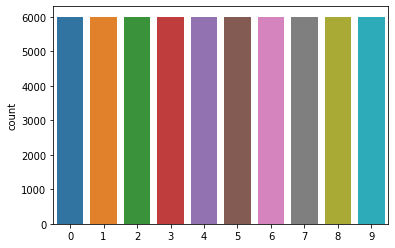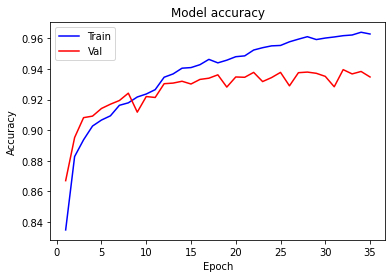Beginner's' Guide to Classification using MNIST Fashion Dataset
- ganesh90
- Jan 5, 2023
- 3 min read
Updated: Feb 2, 2023
In deep learning, we use classification algorithms to tackle the problem of identifying objects. One such problem is to train a machine learning model to identify the clothes present in the images. To do this, we will use the MNIST Fashion dataset that consists of the images of clothes. First, we will train the model using the MNIST Fashion dataset, and then we will test the model on new instances of images.
While doing these, you will learn various concepts like normalizing and reshaping the images, and evaluation of the model using a learning curve graph and a confusion matrix.
IMPORT THE ESSENTIAL LIBRARIES
First we will import the libraries to work with.
import warnings
warnings.filterwarnings('ignore')
import pandas as pd
import numpy as np
import matplotlib.pyplot as plt
import matplotlib.image as mpimg
import seaborn as sns
from sklearn.model_selection import train_test_split
from sklearn.metrics import confusion_matrix
import itertools
from keras.utils.np_utils import to_categorical
from keras.models import Sequential
from keras.layers import Dense, Dropout, Flatten, Conv2D, MaxPool2D
from keras.layers import BatchNormalization
from keras.optimizers import RMSprop
from keras.preprocessing.image import ImageDataGenerator
from keras.callbacks import ReduceLROnPlateauIMPORT THE DATASET
from keras.datasets import fashion_mnist
(X_train, y_train), (X_test, y_test) = fashion_mnist.load_data()SHAPE OF THE DATASET
print("X_train Shape", X_train.shape)
print("X_test Shape", X_test.shape)
print("y_train Shape", X_train.shape)
print("y_train Shape", X_train.shape)
print("X_train datatype", X_train.dtype)X_train Shape (60000, 28, 28)
X_test Shape (10000, 28, 28)
y_train Shape (60000, 28, 28)
y_train Shape (60000, 28, 28)
X_train datatype uint8RESHAPING
Expanding one more dimension for color channel gray
X_train = X_train.reshape(X_train.shape[0], 28, 28,1)
print("X_train Shape", X_train.shape)
X_test = X_test.reshape(X_test.shape[0], 28, 28,1)
print("X_test Shape", X_test.shape)X_train Shape (60000, 28, 28, 1)
X_test Shape (10000, 28, 28, 1)clothes = np.array(["T-shirt/top", "Trouser", "Pullover", "Dress", "Coat", "Sandal", "Shirt", "Sneaker", "Bag", "Ankle boot"])NORMALIZATION
# Normalize the data
X_train = X_train / 255.0
X_test = X_test / 255.0CHECKING DATA IMBALANCE
sns.countplot(y_train)
plt.show()
PERFORMING ONE-HOT ENCODING ON TARGET SET
y_train = to_categorical(y_train, num_classes = 10)
y_test = to_categorical(y_test, num_classes = 10)DEFINING THE DEEP LEARNING MODEL ARCHITECTURE
def define_model():
model = Sequential()
model.add(Conv2D(filters = 32, kernel_size = (5,5),padding = 'Same',
activation ='relu', input_shape = (28,28,1)))
model.add(BatchNormalization())
model.add(MaxPool2D(pool_size=(2,2)))
model.add(BatchNormalization())
model.add(Dropout(0.25))
model.add(Conv2D(filters = 64, kernel_size = (3,3),padding = 'Same',
activation ='relu'))
model.add(BatchNormalization())
model.add(MaxPool2D(pool_size=(2,2), strides=(2,2)))
model.add(BatchNormalization())
model.add(Dropout(0.25))
model.add(Flatten())
model.add(Dense(256, activation = "relu"))
model.add(BatchNormalization())
model.add(Dropout(0.5))
model.add(Dense(10, activation = "softmax"))
return modelLEARNING RATE REDUCTION CONFIGURATION
lr_reduction_config = ReduceLROnPlateau(monitor='val_accuracy',
patience=3,
verbose=1,
factor=0.5,
min_lr=0.00001)CREATING A MODEL AND TRAINING THE MODEL
# Fit the model
model = define_model()
model.compile(optimizer = 'adam' , loss = "categorical_crossentropy", metrics=["accuracy"])
history = model.fit(X_train, y_train, epochs=30, validation_split= 5 / 60, batch_size = 64, verbose = 2, callbacks=[lr_reduction_config])OUTPUT
Epoch 1/35 688/688 - 5s - loss: 0.4715 - accuracy: 0.8348 - val_loss: 0.3602 - val_accuracy: 0.8670 - lr: 0.0010 - 5s/epoch - 7ms/step
................................
................................
Epoch 35: ReduceLROnPlateau reducing learning rate to 3.125000148429535e-05. 688/688 - 3s - loss: 0.0992 - accuracy: 0.9629 - val_loss: 0.2015 - val_accuracy: 0.9348 - lr: 6.2500e-05 - 3s/epoch - 5ms/stepEVALUATION OF THE MODEL
# plot accuracy and loss
def plotgraph_accuracy(epochs, acc, val_acc):
# Plot training & validation accuracy values
plt.plot(epochs, acc, 'b')
plt.plot(epochs, val_acc, 'r')
plt.title('Model accuracy')
plt.ylabel('Accuracy')
plt.xlabel('Epoch')
plt.legend(['Train', 'Val'], loc='upper left')
plt.show()# plot accuracy and loss
def plotgraph_loss(epochs, loss, val_loss):
# Plot training & validation accuracy values
plt.plot(epochs, loss, 'b')
plt.plot(epochs, val_loss, 'r')
plt.title('Model loss')
plt.ylabel('Loss')
plt.xlabel('Epoch')
plt.legend(['Train', 'Val'], loc='upper left')
plt.show()# Get the accuracy, loss, and other information
acc = history.history['accuracy']
val_acc = history.history['val_accuracy']
loss = history.history['loss']
val_loss = history.history['val_loss']
epochs = range(1,len(loss)+1)# Plot the ACCURACY VS EPOCH
plotgraph_accuracy(epochs, acc, val_acc)
# Plot the LOSS VS EPOCH
plotgraph_loss(epochs, loss, val_loss)
model.evaluate(X_test, y_test)313/313 [==============================] - 1s 3ms/step - loss: 0.2128 - accuracy: 0.9320
[0.21283283829689026, 0.9319999814033508]y_pred = np.argmax(model.predict(X_test), axis=-1)313/313 [==============================] - 1s 2ms/step ground_truths = np.argmax(y_test, axis=-1)
cm = confusion_matrix(y_pred, ground_truths)
cmap_value = 'CMRmap_r'
sns.heatmap(cm, annot = True, cmap = cmap_value)
plt.show()
If you are looking for help in any project contact us contact@codersarts.com




Comments